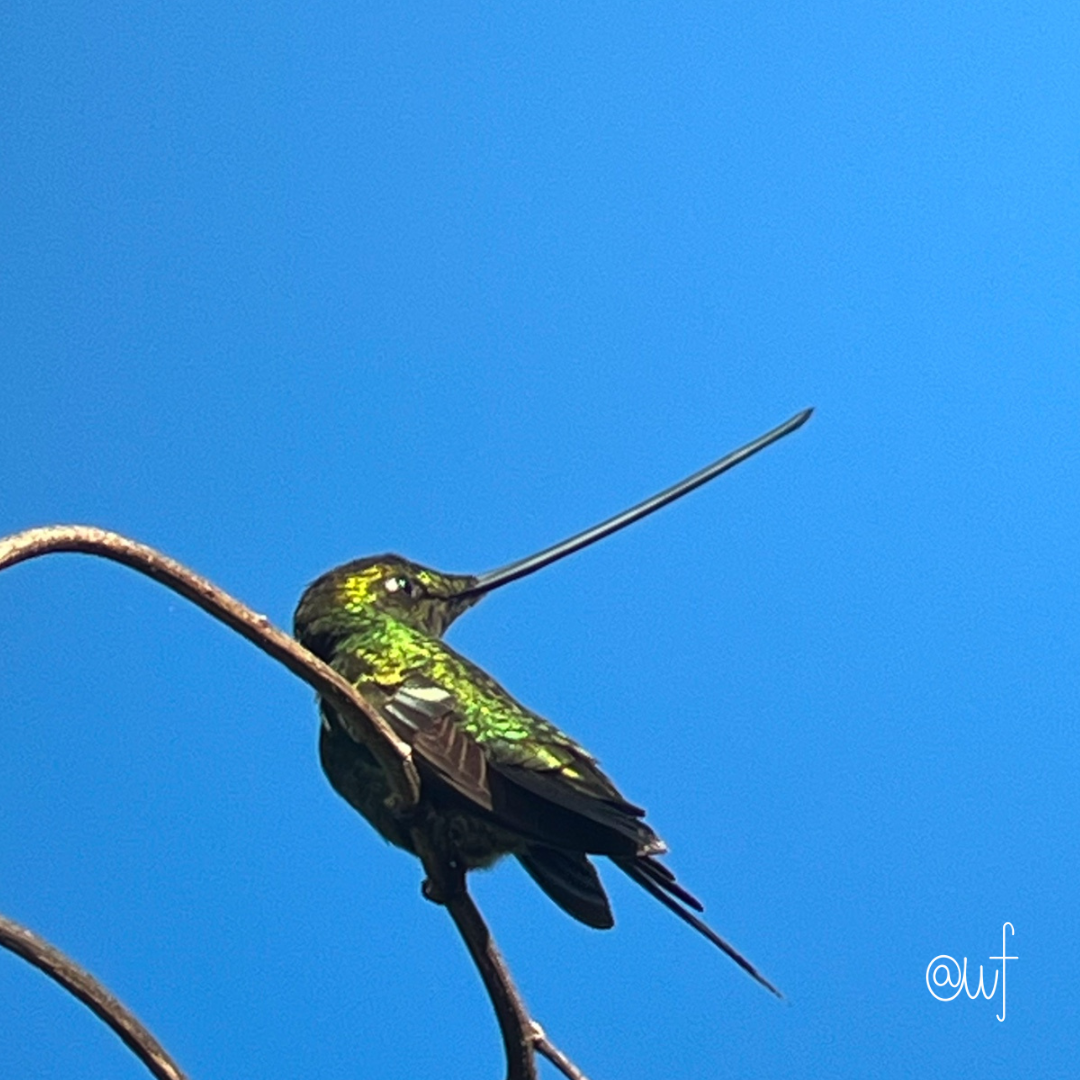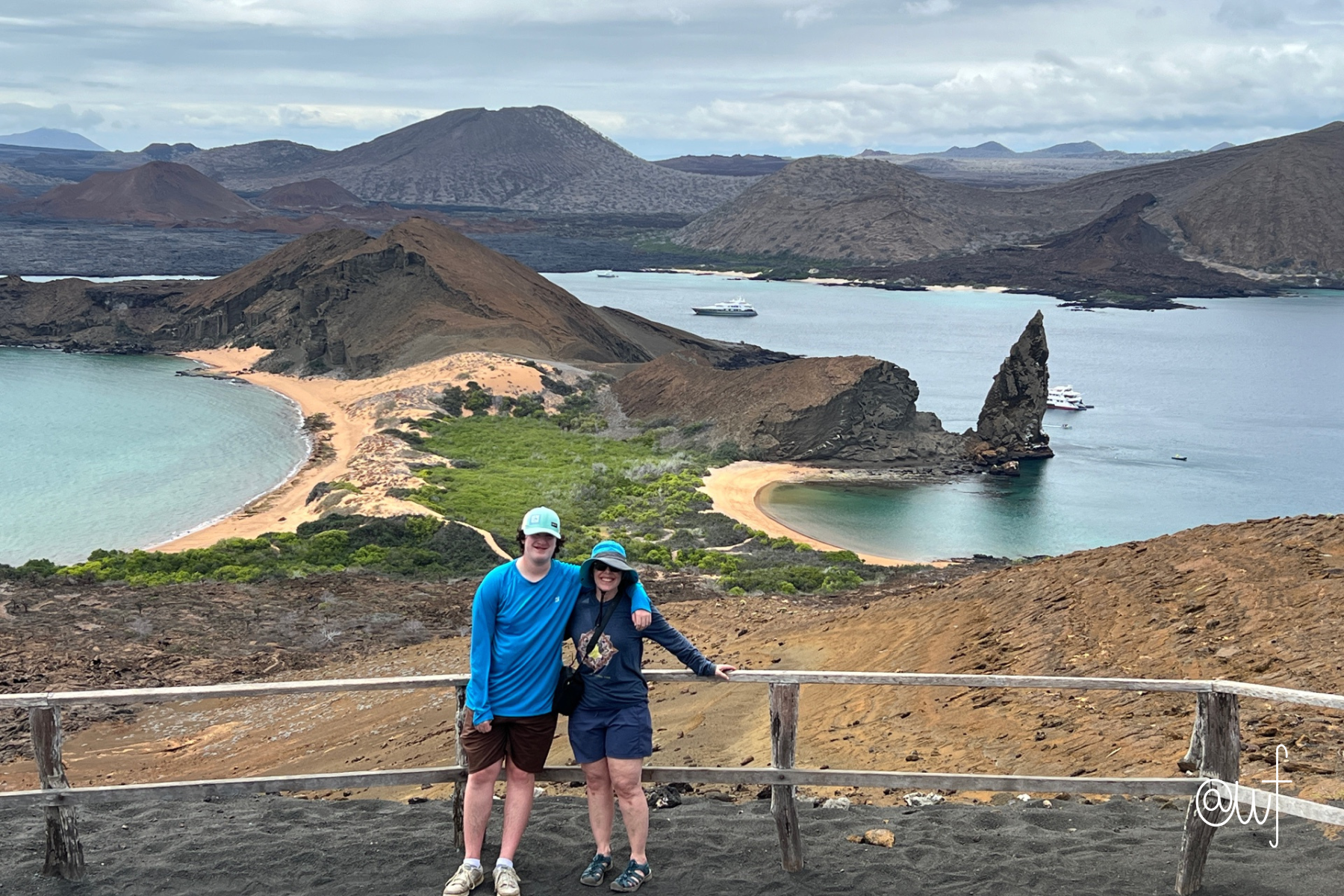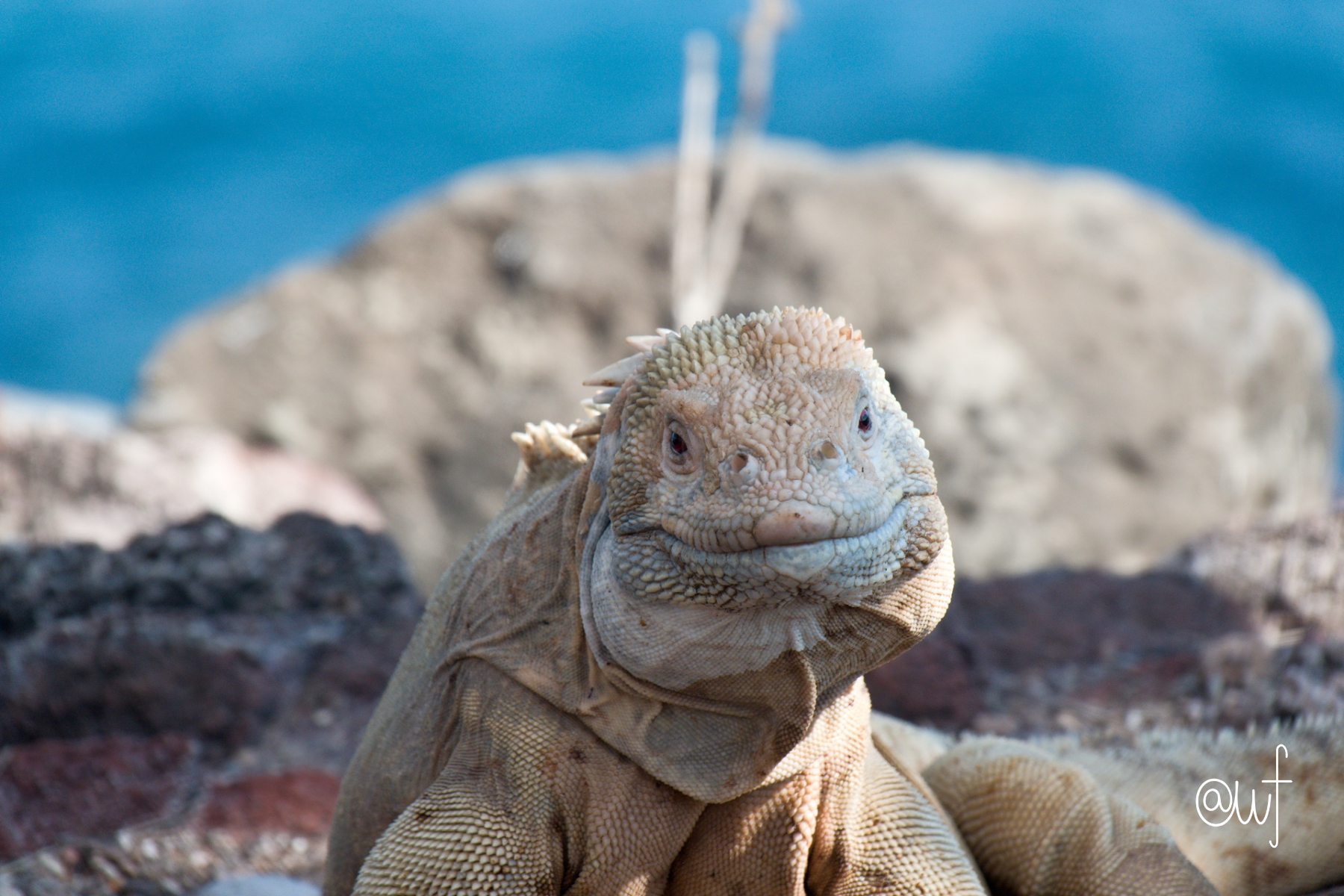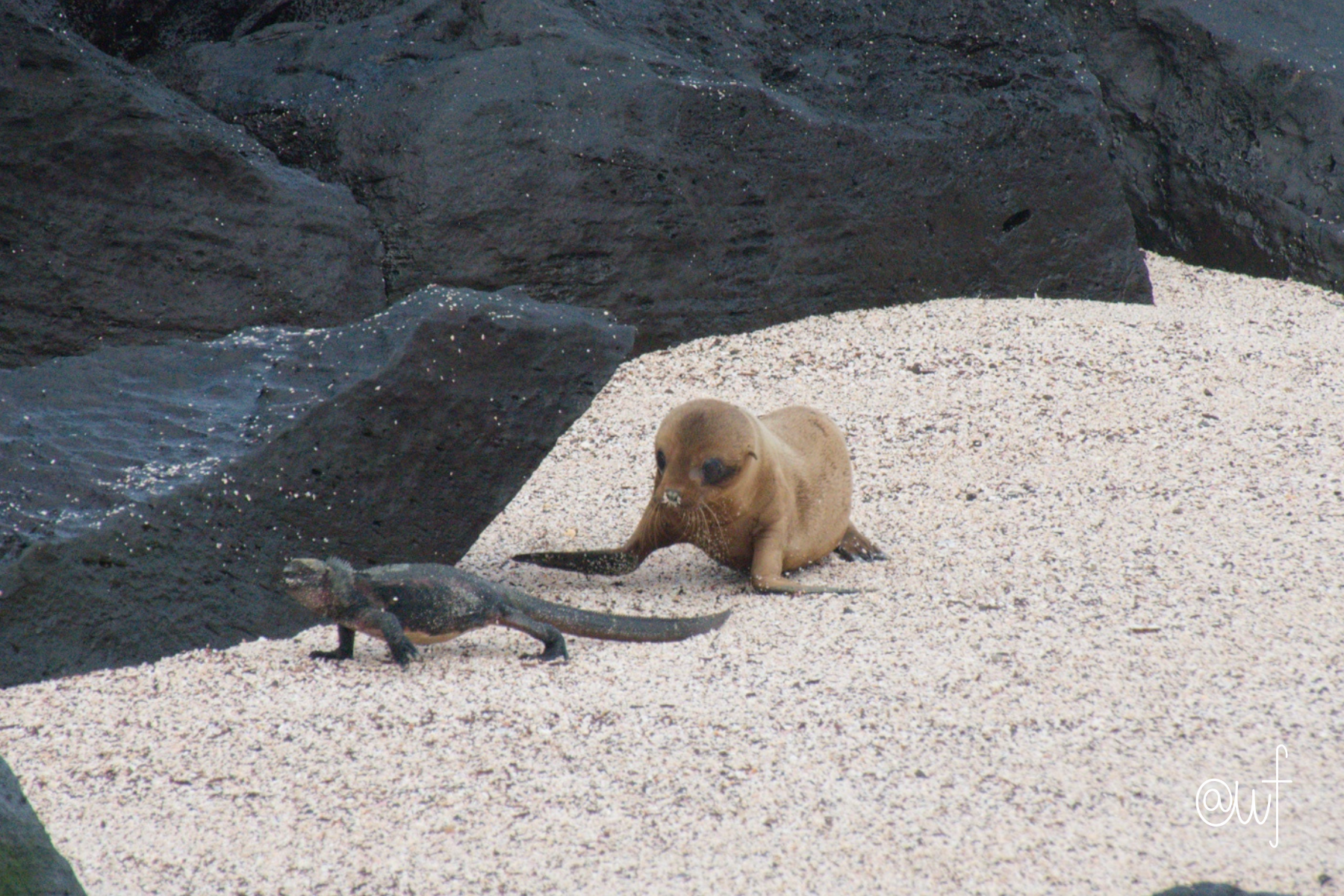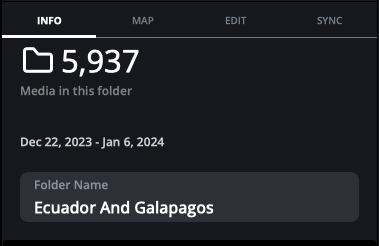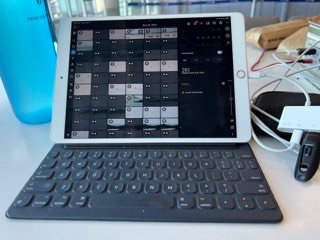Our Epic Trip to Ecuador and the Galapagos!
the ultimate photo bomb
Over the holidays we took a dream trip to Ecuador and the Galapagos. The islands are nicknamed the enchanted islands, and they are aptly named. The beauty of the landscape, the wildlife, and the place in general are incredible.
What does this post have to do with photo organization? Well I took almost 6000 photos on this trip! Yes, you read that right, 6000. Why so many? Because we went birding with a guide in Mindo for a couple days, then were inundated with wildlife in the Galapagos. Today’s post will be about our trip, the next post will be how I handled all of the photos and videos we took. A note about my gear: I brought my DSLR camera for the wildlife, plus my iPhone and a GoPro for underwater. We also had the 3 iPhones from the rest of the family. I took the majority of the photos, but they airdroped photos and videos to me - airdrop does not require internet.
Our Ecuador and Galapagos itinerary
You may be wondering why I write Ecuador and the Galapagos, when the Galapagos are part of Ecuador. That is how I thought of our trip, and as it turns out, that’s how Ecuadorians refer to it as well.
Because we were flying in winter over the holidays, and there were so many air travel delays last year at this time, we padded the front end of our trip in case we needed an extra day or two to get to Quito. We were not going to miss that boat!
in front of the National Basilica in Quito
One day in Quito
Two days birding with a guide around Mindo and the Tandayapa Valley
Week on the Samba visiting islands in the Galapagos
Three days on Isabela Island
One day in Puerto Ayora, Santa Cruz Island
Pre-Galapagos: Quito and Birding in the Mindo Area
The primary focus of our trip was the Galapagos. But since we padded the front end of our trip to make sure we would not miss our boat, I talked my family into birding for a couple of days. They are quite tolerant and even had fun, especially when hummingbirds landed on them and when trekking through cacao plants to find a Spectacled Owl. We were picked up from Quito at sunrise and birded our way to Mindo, in the Ecuadorian cloud forest. We had a wonderful guide (first female birding guide in Ecuador!) who took us to various locations and at various elevations (max elevation 11,000’+) so we could see a huge variety of birds. I have never seen so many hummingbirds! We had rain the second morning so did not see as much until it cleared up, but still managed to find some toucans, trogons, tanagers and more, and we had a lovely Christmas Eve dinner at Las Terrazas de Dana, our lodge in Mindo that arranged everything for us. The two days were absolutely wonderful, and if you are a birder and would like more information, please reach out. I took over 2000 photos during these 2 days - that’s what happens when photographing birds on the burst setting (I deleted about 1700 of them already).
We also had a day in Quito, where at the last minute we decided to hire a guide to take us to the main sites. Churches, markets, and of course the Intinan museum - on the equator at the middle of the world.
The Main Event: A Week on the Samba in the Galapagos Islands
Before committing to this trip, I exhaustively researched the various ways to visit the Galapagos. You can go by boat, or you can island hop and take day trips. I quickly ruled out the latter is it seemed like there would be a lot of wasted time as there are 3 main islands you can stay on but so many more to see. So I focused on the different types of boats. We wanted a smaller, more flexible boat, and we wanted to be very active. The Samba fit the bill perfectly. I did not tell my family that with this boat we would be getting up before sunrise every day… The booking was very easy and Heather from CNH Tours patiently answered my myriad of questions.
The ferry from Baltra to Santa Cruz. Those are our little duffels sitting on top.
Getting to the Galapagos from Chicago is a bit of a trek. First we had to fly through Panama to Quito. Then from Quito we flew through Guayaquil before landing on Baltra Island. You need to pay a national park fee, and a transit fee, and have your luggage inspected to be sure you aren’t bringing any fresh fruits, vegetables, or meats onto the islands. There is not really anything on Baltra except the airport (and as we would later discover a soccer pitch), so we met up with our fellow passengers and our guide and moved directly to the highlands of Santa Cruz to visit with the giant tortoises. But because we had landed on a different island, we had to take a bus to a ferry (where all the luggage was thrown on top) to reach the bus that would take us there. This was also the end of our connectivity for the next many days 😁. I love a good internet and news break - somehow my teenage boys managed to survive.
Santa Cruz and the Giant Tortoises
Giant Tortoise on Santa Fe island
You may have heard the story of Lonesome George, a giant tortoise that lived to over 100 years old. We did not meet him as he passed away in 2012, but visiting with his friends was amazing. The sheer size of these creatures blew us away. There are actually 15 different species of giant tortoise in the Galapagos, each of the big islands had it’s own different subspecies, differentiated by location and shell shape. We walked around learning about the tortoises, and had lunch where we started to get to know our fellow passengers with which we would spend the next week. We totally lucked out with just the nicest group of people - a family from California, a family from Australia, and a mom and daughter from California.
From there we went to the town of Puerto Ayora, where we had an hour or so to wander around and pick up anything we might need for our week on the boat (SPF 100 sunscreen and Dramamine were recommended). In the it’s a small world category, we met up with my cousin and his kids while in Puerto Ayora - they were also visiting the islands at that time. What are the odds?. Then we boarded our home for the next week, the Samba!
The Samba
We chose the Samba because it is small - 14 passengers - and touted an “active” itinerary. It certainly lived up to it’s name! We had two small cabins with bunk beds, full bathroom, and little else. The cabin was small but fine, especially since we did not spend much time in it. There were many other places to hang out on the ship where we had beautiful views of islands and ocean. We had a superb chef who somehow managed to keep everyone’s allergies, likes and dislikes straight (we had vegans, pescatarians, allergies, and some picky eaters). Every meal he managed to have something for everyone and everything was fresh and delicious. On occasion the Samba would trade with the fisherman so we had fresh fish almost daily, along with fresh fruit, juices, and a variety of other foods. No one went hungry!
Samba - 14 passengers and a Frigate Bird along for the ride
Our days all went something like this:
our daily schedule
sunrise kayak
breakast
snorkeling
island hike/walk
lunch
snorkeling
island hike/walk
siesta
dinner
bed!
I love kayaking and hiking, but have not done a ton of snorkeling and am not overly comfortable in the water. But it turned out not to be a problem. On our first full day on the boat we did an equipment check where we fit and tested out our snorkels, masks, fins, and wetsuits. We had brought prescription masks (highly recommend, we bought them on Amazon) and had tried those out at home so were all set with that. But I quickly learned putting on a wetsuit is not fun! Some of our snorkeling was in water that was warm enough that we did not need them, but we were in the water often for 1.5-2 hours at a time, and it provided not just warmth, but also buoyancy and sun protection. The latter probably being the most important as the sun on the equator is strong!!! I got better with the wetsuit as the days went on and did not consider swimming without it as it allowed me to stay in the water a whole lot longer and not worry about burning. Except for my hands - on day one in the water I didn’t even consider putting sunscreen on my hands and boy did I pay for that mistake.
We had a fantastic guide, Jimmy, who was a wealth of knowledge and fun too (check out his Instagram @galapagosfreediver). He quickly learned what everyone was interested in and what our abilities were and seamlessly used that information to make our whole trip perfect. On one early morning kayak ride we came across lots of Blue-footed Boobies on the rocks perfectly situated with the sun for photographs. I had left my camera behind as I never take it kayaking (for obvious reasons), so he offered to have the other panga bring it to me. At first I said no, but he could tell I was still thinking about it so the next thing I know the panga shows up with my camera. I got in the panga and we went really close to shore so I could photograph the birds. Amazing!
The captain was flexible too; one evening during our navigation to the next spot he saw a feeding frenzy so stopped the boat for a while so we could watch. The sharks and sea lions were working together, with the Frigate Birds circling above to pick up the scraps. Trivia time: Frigate Birds cannot land on water because if they get wet they cannot fly. So they circle and watch and steal to get their food. Thus they are called the pirates of the sea. After a bit the dolphins came and played alongside the boat. Magical!
Snorkeling
We snorkeled every day, often twice a day in water that ranged from 5-50'+ feet deep. According to Jimmy it is not snorkeling if you can touch the ground 😁, so the water was often quite deep. It was incredible! So many fish, plus rays, sharks, sea turtles, sea lions, penguins and a whole lot more. I have no idea what kinds of fish we saw but there were huge schools of them. We also loved seeing the sharks which for some reason were not scary. The sea lions were very playful, zooming around us and coming right up to our faces. Every place we snorkeled was different in both what we saw, water temperature, and waves. The water was crystal clear and the most beautiful blue/turquoise colors. There was never anyone else around, just our small group.
The Islands
We also did a lot of island walks and panga rides. A few of the islands we were supposed to visit were closed due to an outbreak of the avian flu, and one island walk was cancelled because the waves were too high so we could not land (potentially because of the big earthquake in Japan), but we diverted to something else - either more snorkeling or panga rides along the shore.
On the islands we saw sea turtles mating, 2-3 day old sea lion pups, Blue-footed Boobies diving en masse, marine iguanas, land iguanas, small and large birds - including some of Darwin’s finches. Frigate Birds, the “pirates of the sea” circled the air looking for food to steal. We even saw a sea lion pup attempting to play with an iguana. The iguana was not interested. Every island looked quite different based generally on how old it was. There were cactus trees, lava, and some other interesting landscapes. We had every island to ourselves, I think there was only one time where there was another group arriving as we were leaving.
On our last night on the boat we took the panga to Baltra for a passenger vs. crew soccer game! It is unclear to me who actually won, as there was some shifting of teams, but it was a great way to end the trip.
Post-Samba: Isabela Island
We wanted to squeeze every last moment out of my son’s school break, so we added a few days on Isabela Island. We took a small 9 passenger plane to get there, with a weight limit for luggage of 25lbs (combined personal item and luggage) for each of us. We just made it - our luggage for the four of us weighed in at exactly 100lbs. This was no small feat, that included both our actual luggage and our backpacks (the ferry picture above shows just how small our duffels were). We travelled very light for this trip with each of us carrying a small backpack and small duffel, and that was it. Those small bags contained everything we’d need for 17 days. The boys each had a ride in the co-pilot seat.
Isabela is magical. We stayed right on a breathtaking beach filled with iguanas, Brown pelicans, Blue-footed Boobies and more. We had a fantastic dinner at The Beach restaurant where we sat, as you might imagine, on the beach. We spent a lot of time relaxing, playing cards, walking on the beach and through the very tiny town. No credit cards, no working atm, spotty internet and a bohemian vibe. It was a nice way to rest after an active week on the boat.
We also took a day tour to Los Tuneles. It was beautiful, but absolutely confirmed for me that seeing the Galapagos via ship is the way to go. There was a lot of wasted time getting gear, getting to the boat, getting to our destination on the water (45-60min each way). Then there were 4 other day tour boats at our first stop and 5 others in the water for snorkeling. It felt crowded, and the people weren’t as conscientious of others around them as our small boat group of 14 was to each other. There was a lot of sediment kicked up while snorkeling as people didn’t know how to use their fins or just didn’t care that they were making the water cloudy for those behind them. But we had lovely views of interesting lava formations, and saw lots of sea turtles, sharks, and sea horses, so it was still worth it.
at Los Tuneles, strategically taken to cut out the other people walking around
Puerto Ayora and Home
For our last day we were advised not to try to fly from Isabela to Baltra to Quito to home on the same day, so we flew back to Baltra a day early to spend the day in Puerto Ayora, the main town in the Galapagos (on Santa Cruz island). After landing on Baltra, we took our bus to the ferry to a taxi to town, seeing lots of giant tortoises in the road on the way. We picked up a few souvenirs and hung out on the waterfront. At night the sharks and rays are attracted to the lights on the pier, so we had a few last looks at those, along with the sea lions snoozing on the benches.
Then it was time to say goodbye to the enchanted islands and go home. We took our taxi to the ferry to the bus back to the airport and flew to Quito then onwards back to Chicago. As it turns out we left the day all of the Ecuadorian unrest began, so were a bit lucky to leave when we did. We had a very long delay in Houston, but I took advantage and worked on backing up, cleaning out, and editing my 6000 photos from 6 different cameras while sitting in the airport, on a 2020 iPad Air without internet. More on how I did that coming soon!





